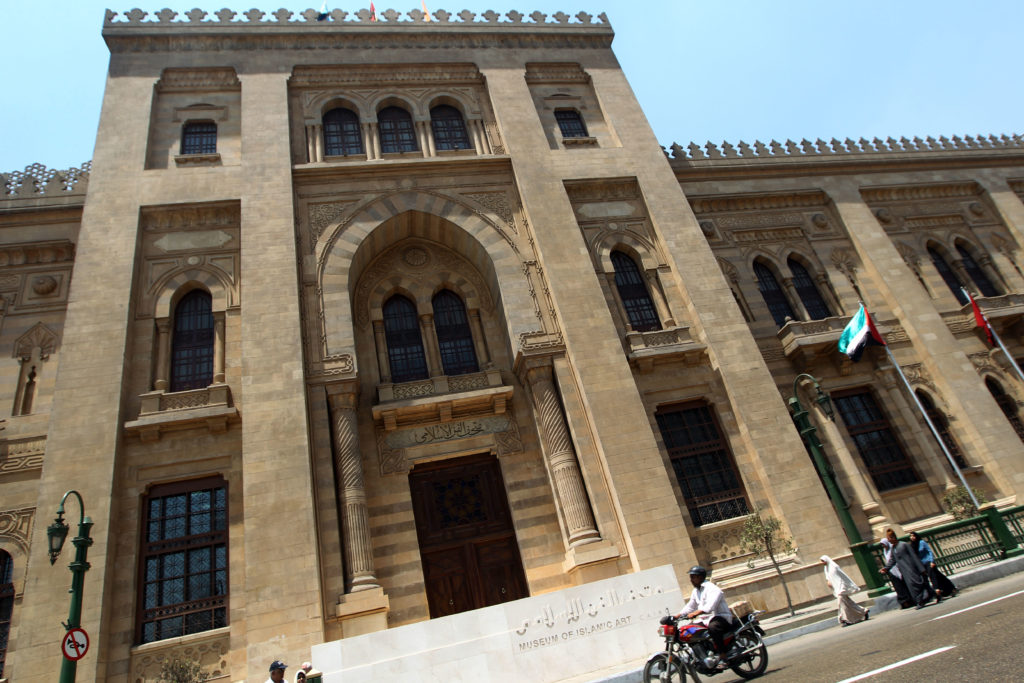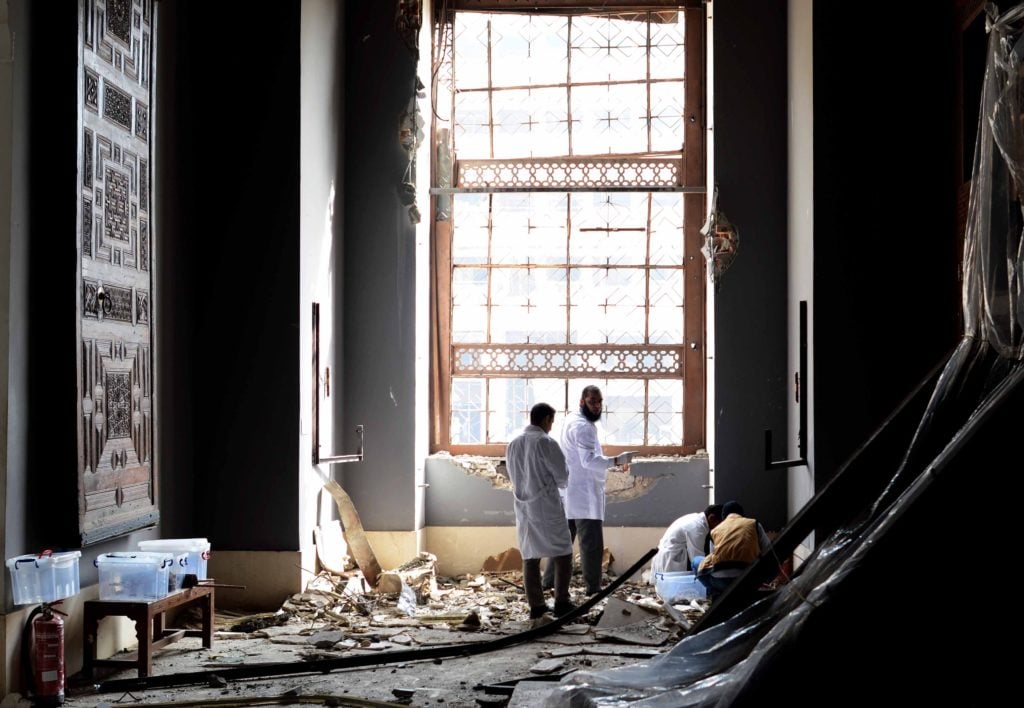Art World
Museum of Islamic Art in Egypt Reopens After Car Bomb Damage
The renovated museum boasts three new galleries to display a total of 4,400 relics.

The renovated museum boasts three new galleries to display a total of 4,400 relics.

Caroline Elbaor

The Museum of Islamic Art in Cairo reopened on January 20, some three years after it was damaged in a 2014 car bombing orchestrated by Egyptian jihadists. It is home to one of the world’s most significant collections of Muslim art, housing over 100,000 artifacts—179 of which were impaired in the explosion.
According to a report from the AFP, Antiquities Minister Khaled el-Enany said that 160 of the affected pieces have been restored. These repaired relics will go back on display with special gold labels to indicate their tumultuous past.
Among the works damaged beyond repair are glass lanterns from the Medieval period, when the Mamluks, a slave warrior caste, ruled Egypt. However, during reconstruction, the museum erected three additional galleries to publicly exhibit a total of 4,400 relics—nearly three times more than the 1,450 on display prior to the bombing.

Workers inspect the damage in the Museum of Islamic Art in Cairo on January 26, 2014 after it was hit during a car bomb explosion. Photo Courtesy MOHAMED EL-SHAHED/AFP/Getty Images.
“The inauguration of the Museum of Islamic Art embodies Egypt’s victory against terrorism, its capability and willingness to repair what terrorism has damaged, and to stand against terrorist attempts to destroy its heritage,” said el-Enany at the televised ceremony.
Egyptian President Abdel Fattah al-Sisi was also present at the reopening, flanked by ambassadors of countries who contributed to the renovations, including Italy, Germany, the US, and the United Arab Emirates. The United Nations cultural organisation, UNESCO, also helped to finance the reconstruction.
The Museum of Islamic Art’s history dates back to 1903, when it was first opened. Despite its name, the museum’s collection—which includes a sword said to have belonged to the prophet Mohammad—stretches beyond the works of solely Islamic craftsmen, embracing pieces by Jewish and Christian artists as well.
In a statement from the museum’s director, Ahmed al-Shoky, he said, “The message of the Museum of Islamic Art is that whether you are Muslim or not you are welcome to be a creator if you have contributed to the Islamic civilization.”